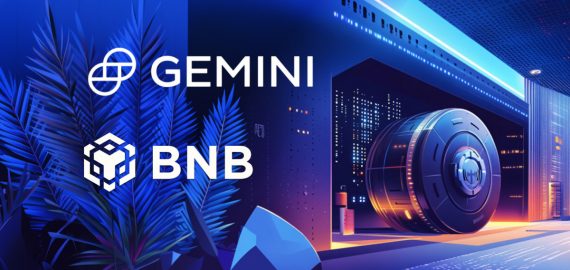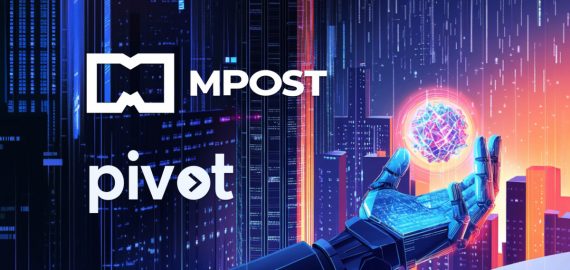Your Choice, Your Block Explorer: Empowering Blockchain Users and Improving UX


In Brief
The freedom to choose our preferred crypto block explorer is crucial for promoting competition, innovation, and a better blockchain user experience.

In the decentralized economy, where no single entity holds absolute control, blockchain applications like wallets, DEXs, and marketplaces are unwittingly participating in promoting a form of centralization. Whenever a transaction is completed, these apps overwhelmingly funnel users to centralized, closed-sourced block explorers. This goes against the principle of user democracy and decentralization and discourages competition, innovation, and choice.
The world is historically multipolar, no matter how we look at it. We’re presented with options and we can choose. This ability to choose propels new feature development and promotes competition, which in turn results in better products.
Choice in block explorers is paramount. Similar to the freedom we all have to set our own default web browsers, being able to select the best block explorer for our specific needs is crucial. It is also important to have multiple choices so that data can be compared between several explorers to check for accuracy and to provide infrastructure redundancy should an explorer go down for any period of time.
Having the freedom to choose our preferred crypto block explorer will accelerate the development and adoption of Layer 2 solutions, allow for flexible marketing strategies, and improve the overall blockchain user experience.
What is a block explorer?
Raw blockchain data is optimized for machines, but not for people. It is sent in a compact binary format which is not human readable. Block explorers act as interpreters of this data, taking it in, indexing it, and presenting it so that it’s easy to read and use. Depending on the chain and the block production cycle, this process must also happen extremely quickly.
Block explorers provide data transparency and act as a primary means of searching a chain and confirming transactions have taken place. The transaction page serves a similar function to a bank receipt, providing information about a transaction, such as when it occurred, who it occurred between, and the value of the transaction at the time. The data can also be exported for taxes or other reasons.
In addition to this functionality, newer block explorers are becoming more and more like search engines and web portals for the entire Web3 ecosystem. They bring in off-chain data to augment the onchain data, provide tools for contract verification and interaction, and display statistics, decentralized applications (dApps), and other relevant information.
Most Layer 1 blockchains have their own dedicated crypto block explorer. Depending on their preferred network, users can choose from an Ethereum, Solana, Polygon, Binance Smart Chain, or Bitcoin Block Explorer.
In short, block explorers are a vital and necessary tool for all chains. As more chains arise and new functionality is added, continued block explore feature development and innovation is needed to support the ever evolving blockchain landscape.
User experience – the cornerstone of blockchain navigation
Web3 (blockchain) user design and experience has seriously lagged behind modern Web2 design. Developed by and for the seriously technologically-minded, there wasn’t an initial need for friendly frontends for blockchain applications. Of course, this probably turned off a lot of would-be enthusiasts, and now Web3 is in catch-up mode to capture consumers. Recently, the Web3 user experience has improved, and applications are consequently easier to use and more customizable to a user’s specific preferences.
This is especially true in the realm of block explorers. While everyone uses an explorer to confirm their transactions, the use cases beyond that are varied:
- Some users are more development-focused, requiring easy access to logs and contract data, but they also need lots of API endpoints and documents on how to integrate them.
- Some users are more social, and they want to see which addresses or contracts are most used, find connections, and search for apps they may want to try.
- Some users are early adopters, choosing to use and explore chains with newer features or unique infrastructure.
- Some users want to be able to customize their explorer – adding watch lists with private and public tags to create a tailored interface.
For each of these cases, there is a block explorer that best aligns with their needs – whether that’s an Ethereum, btc block explorer or other. Unfortunately, they aren’t finding these options because wallets and apps aren’t providing them. They present a single link to a single explorer, and users are never exposed to the possibility of a better explorer experience.
Choice brings competition, adaptability, and innovation.
In any industry, consumer choice drives product development. Products either evolve (in features, usability, and marketing), or die. However, when there is no competition, products and users become complacent. They can’t move to a new solution, and the solution has no need to improve as they’ve already captured the user base. A lack of choice stifles innovation, and until new products come in to shake things up, the status quo becomes the standard.
Fortunately, new block explorers are moving the dial, and there is plenty of innovation happening. While these new explorers each have their own dedicated fanbase, it is tough to expand that reach when all the tools that refer users to block explorers continue to embrace older, centralized infrastructure. The blockchain industry as a whole is dynamic and constantly advancing, and the tooling that supports it needs to embrace that ethos, too, helping users find the block explorer that best suits their needs. Be it an Ethereum or Bitcoin block explorer or something else.
Navigating the multichain paradigm
Another consequence of centralized, monolithic infrastructure is the inability to pivot and evolve to support new advancements. With the recent explosion of L2s and rollups, we are seeing a multichain paradigm form before our eyes. Where there were once only a few chains, there are now many, each with variations in users and usage. All of these chains need a functional explorer from day one.
Centralized explorers have had difficulty keeping up, unable to support some of the newer rollup features. This leaves a data gap, and users directed to these explorers are not finding the information they need.
The newer class of explorers are much more nimble, providing advanced views and features more quickly. Open-source explorers are particularly important in this scenario, as they can be customized by anyone, and any chain can spin-up and use an open-source explorer as soon as their chain is operational.
Multichain support and cross-chain data access are other areas where decentralized explorers are superior to older centralized explorers. Because these newer explorers support a wider breadth and range of chains, they have more searchable data that helps tie together the user experience across chains.
Advocating for choice
Blockchain empowers us all. It allows us to be our own banks, to escape centralized services that control our data, and replace them with decentralized applications where we choose what data we want to share. The ability to make these choices is important, and choice should extend to all aspects of our blockchain usage.
Technically, we can choose to use any explorer we want. However, if it comes down to clicking a link versus trying to find another explorer, changing hidden settings in a wallet, or copying and pasting long hexadecimal addresses, most users click the link. In fact, most users don’t even know there is another option unless they are power users or happen to stumble across a new explorer.
If wallets and apps want to provide the best user experience, part of their efforts should be to educate their users about ecosystem tools and present choices for those tools. When someone finds the right explorer for their needs, they have a better blockchain experience. It’s that simple.
Let’s make blockchain better for everyone by providing choices and letting people decide which tools they want to use!
Disclaimer
In line with the Trust Project guidelines, please note that the information provided on this page is not intended to be and should not be interpreted as legal, tax, investment, financial, or any other form of advice. It is important to only invest what you can afford to lose and to seek independent financial advice if you have any doubts. For further information, we suggest referring to the terms and conditions as well as the help and support pages provided by the issuer or advertiser. MetaversePost is committed to accurate, unbiased reporting, but market conditions are subject to change without notice.
About The Author
Igor Barinov is an award-winning blockchain expert with over 12 years of experience, known for his pioneering work in interoperability, proof of stake consensus, and federated blockchains. He leads Blockscout, an open-source block explorer that supports over 600 EVM-based networks. Barinov has played pivotal roles in POA Network, Gnosis Chain, and xDAI, and has a track record of success in hackathons at events like Consensus and the Texas Bitcoin Conference.
More articles

Igor Barinov is an award-winning blockchain expert with over 12 years of experience, known for his pioneering work in interoperability, proof of stake consensus, and federated blockchains. He leads Blockscout, an open-source block explorer that supports over 600 EVM-based networks. Barinov has played pivotal roles in POA Network, Gnosis Chain, and xDAI, and has a track record of success in hackathons at events like Consensus and the Texas Bitcoin Conference.

















































